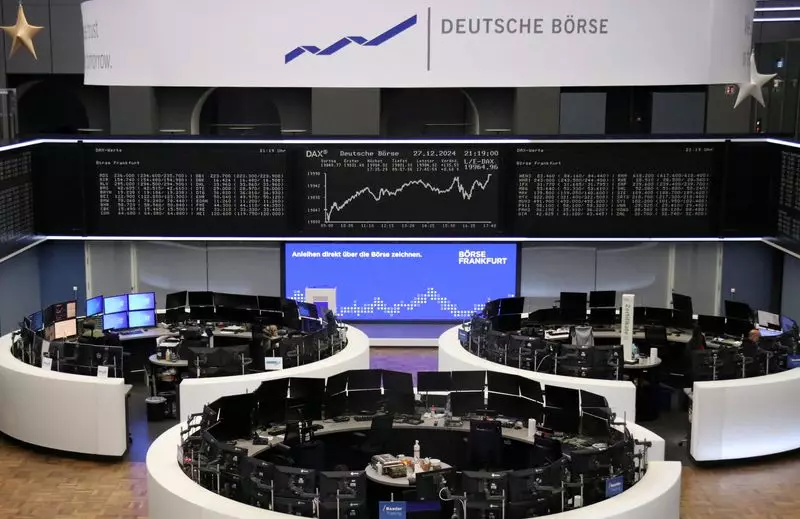As the year draws to a close, European stock markets faced downward pressure on Monday, mirroring declines seen across Wall Street. The pan-European STOXX 600 index witnessed a decrease of 0.6%, with technology and healthcare sectors leading the retreat. This downturn signals a cautious sentiment among investors, especially as many European exchanges anticipate a quieter trading landscape in the lead-up to the New Year holiday. Meanwhile, several key stock markets, including those in Germany, Italy, and Switzerland, are slated to close for trading, adding a layer of uncertainty to the investment environment.
Despite the broader decline, the STOXX 600 maintains a favorable trajectory for 2023, poised for an annual increase of approximately 5.9%. German equities stood out as the year’s top performers, while French stocks struggled to make gains, ultimately expected to grapple with an annual loss of about 2.5%. This disparity highlights the varied experiences within Europe, where factors like fiscal deficits and political instability directly impact investor confidence.
The Influence of Bond Yields
A significant factor contributing to the current market retreat is the elevation of government bond yields, particularly the 10-year German bund, which hovers near its highest levels since mid-November. This rise in yields has been correlated with increasing U.S. Treasury yields, fueled in part by uncertainties surrounding future monetary policy. The looming specter of inflationary policies, particularly in the context of U.S. politics under a Trump administration, has led many investors to reevaluate their positions in equities.
Investment experts, such as Hargreaves Lansdown’s senior equity researcher Matt Britzman, have underscored the significance of the tech sector’s performance. While the S&P 500 has surged by an impressive 25%, supported by significant interest rate cuts from the Federal Reserve that have invigorated technology stocks, European benchmarks remain sluggish by comparison. The dragging sentiment in the market, particularly following last Friday’s sell-off attributed to climbing Treasury yields, reflects ongoing apprehensions about interest rates’ potential impact on growth.
Sector-Specific Performance
Diving deeper into sector performance reveals interesting contrasts. The automotive and food and beverage industries are projected to emerge as the weakest sectors for the year across Europe, facing several challenges that have hindered their growth prospects. Notably, banks are expected to outperform their competitors, suggesting a potential shift in focus for investors seeking stability amidst the market fluctuations.
In the German market, despite the overall dip, the DAX index is still on track for a remarkable annual surge of around 19%, establishing it as a leader among major European indexes. However, this success story is somewhat overshadowed by France’s CAC 40, which is grappling with mounting concerns over its fiscal policies and governance issues.
As 2023 comes to a close, investors face a pivotal moment in navigating the intricate landscape of European stocks. The interplay of rising bond yields, sector-specific strengths and weaknesses, and broader geopolitical factors will likely shape market dynamics in the coming year. For traders and investors, adapting to these ever-evolving conditions will be crucial in positioning themselves for potential opportunities as they approach 2024.

